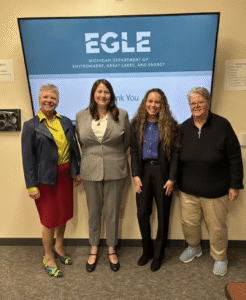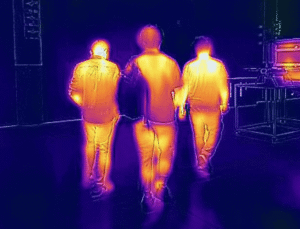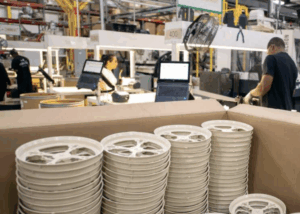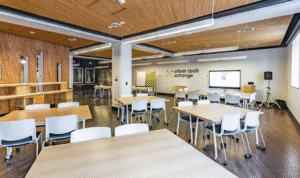
- Kim Kisner
- Business
- 08/13/2024
Funds Targeted for Local Incentives, Workforce Development, Equity
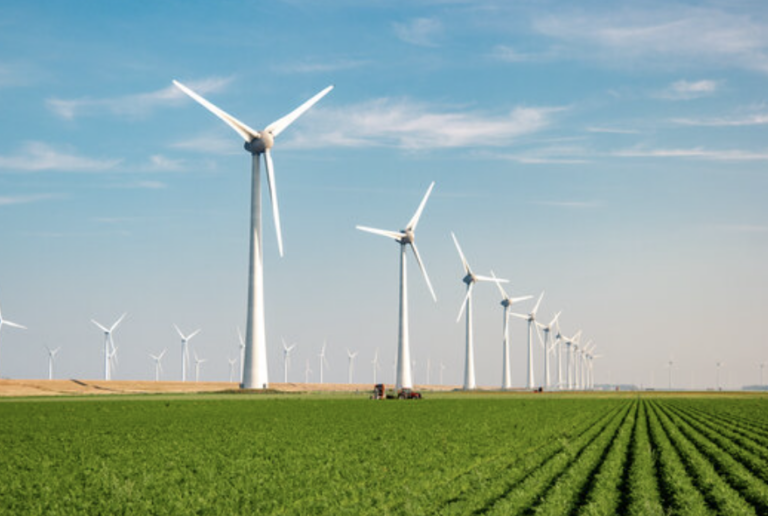
According to an announcement made by the state and federal governments in July, Michigan is set to receive a significant financial boost to aid in the expansion of large wind and solar projects.
Specifically, $129 million in federal funds has been designated to streamline the processes involved in siting, zoning, and permitting large-scale renewable energy installations. This initiative aligns with the state’s goal to rapidly decarbonize its electric grid over the next decade.
The funding, part of a $4.3 billion allocation being distributed across the United States, is sourced from the 2022 federal Inflation Reduction Act’s Climate Pollution Reduction Grant program.
SBN Detroit interviewed Joel Howrani Heeres, director of community resilience at Public Sector Consultants, who also was Detroit’s first sustainability director, for his thoughts regarding how the money should and will be spent, potential challenges, geographical impact, and other topics.

Q: Michigan recently received $129 million in federal funding to advance large wind and solar projects. How do you see it being allocated and what are the biggest priorities to address in terms of large wind and solar?
A: I think that the state is rightfully deploying this money to help incentivize local governments to permit solar and wind projects within their boundaries.
We have a very aggressive goal to achieve as a state – 60% renewable energy by 2030.
The funds provide a significant incentive for communities to host renewable energy infrastructure, offering up to $5,000 per megawatt. Rural areas often lack the resources and personnel needed to review permits and manage other aspects of developing this infrastructure. This financial support will be instrumental in helping these communities navigate the complexities involved in such projects.
Q: The funding comes from the Federal Climate Pollution Reduction Grants (CPRG) program, created by the Inflation Reduction Act. Can you tell us more about this and its specific influence in Michigan?
A: The CPRG is one of the first grant programs to enable both planning and implementation to address climate change.
There is funding allocated for metropolitan areas above a certain size. To me, this regional approach makes a lot of sense. Emissions don’t stop at city boundaries. For example, there are many heavy industries on the Detroit/Melvindale border that impact that whole area and beyond.
Taking a regional approach and also statewide grants have been used to help EGLE do their planning as well.
I was disappointed to see that Michigan’s metro areas did not get implementation money from this grant, but accelerating renewables throughout the state is important.
Q: What are the challenges that come with such large-scale complex projects in Michigan?
A: First, local permitting and project development.
The amount of land required for renewable energy installations presents another challenge, especially in rural areas where agricultural land is at a premium. Convincing these communities to accept large renewable installations, particularly when the power generated is likely to be consumed elsewhere, can be difficult.
Discussing the benefits and costs of hosting these installations has become a political issue. Communities want to see tangible benefits and are reluctant to give up their land without adequate compensation.
Thus, providing financial incentives to these communities could be an effective approach.
Another important consideration is determining, from a grid perspective, the most strategic locations to connect these large installations to ensure efficient power transmission.
Q: Is there a long runway with projects like this from an execution and timeline standpoint?
A: Yes, there is. The process from conceptualization to actual ground-breaking involves numerous steps. This includes navigating the political landscape, such as public hearings and potential opposition. Additionally, there are essential stages like securing permits and installing infrastructure. Each of these components requires considerable time and careful planning.
Q: Is there a geographical component? What areas of Michigan will be most impacted?
A: Rural areas will be impacted the most. Beyond that, I don’t think there will be geographic concentration, I think it will spread across the state.
Q: Do you foresee local opposition from Michiganders regarding these projects, and, if so, what are your thoughts on how to address this?
A: Yes. Just the other day I was driving through Washtenaw County and saw signs that read “No Industrial Solar.”
The focus returns to the tangible benefits of these installations. It is essential for people to see clear advantages. For instance, if a local government receives $5,000 per megawatt to enhance local services — funds that would not have been available otherwise — it can help alleviate some of the opposition to these projects. This financial support can be directed toward improving community services, thereby showcasing the positive community benefits of the installations.
Q: Federal money will also flow to workforce development programs. What are your thoughts on how these projects may boost the economy and put people in jobs?
A: It’s a crucial aspect of our current situation. We are undergoing a significant energy transition, shifting from fossil fuels to renewable energy sources, which represents a fundamentally different model. This transition requires Michiganders to acquire new skills to compete in the emerging green economy.
Additionally, we’re moving toward the electrification of everything. By producing clean energy, we can electrify our homes, cars, and various aspects of our lives, as it all comes from a sustainable source. There is a critical need to retrain workers from the fossil fuel sector to participate in the electrified economy. Significant investments are being made in this area.
Ultimately, this is a comprehensive ecosystem, and these changes will impact labor across all sectors.
Q: What other ancillary benefits can we expect to accompany the execution of these projects?
A: As we transition more of the energy load to cleaner technology, we’ll have less localized pollution, leading to statewide public health benefits.
Additionally, there’s a significant potential for economic development. Michigan stands out as one of the most proactive states in terms of climate ambitions, which could attract industries seeking to operate on green power. Whether it’s tech companies, manufacturing firms, or other businesses, the state’s commitment to sustainability could serve as a powerful incentive for companies to relocate their operations here.
Q: What about the equity piece of this?
A: It’s crucial that equity remains a central focus in all these efforts. For example, $10 million has been allocated specifically for initiatives in tribal communities.
Everyone engaged in this work must consistently consider how to ensure that those who have not benefited from previous energy infrastructure projects—often bearing the brunt of negative impacts from coal plants and industrial activities—receive substantial benefits from investments in clean energy.
The Biden Administration’s Justice40 initiative aims to direct 40% of the benefits from federal investments to disadvantaged communities. We must maintain a strong focus on this goal.
Equity must be actively cultivated. If we continue with business as usual, only those who typically benefit will continue to do so, while others will be left behind. It’s essential to address these disparities to ensure fair and inclusive progress.
Be sure to subscribe to our newsletter for regular updates on sustainable business practices in and around Detroit.
Kim Kisner
- All
- Business
- Community
- Education
- Events
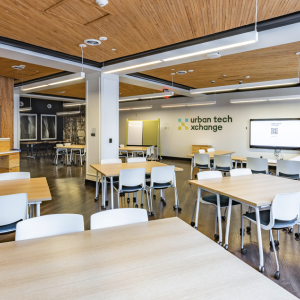
Now in its fourth year of operation, Urban Tech Xchange (UTX) has become a living laboratory where emerging technology startups can test, refine, and validate smart urban systems in real-world conditions. Launched through a collaboration between Bedrock, Bosch, Cisco, and Kode Labs, UTX builds on the foundation of the Detroit Smart Parking Lab (founded earlier by Bedrock, Ford, MEDC, and Bosch) expanding its scope beyond parking into logistics,...
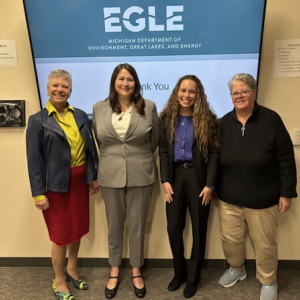
Butzel is one of Michigan’s longest-standing law firms, advising businesses across industries on regulatory compliance, environmental law, and complex commercial matters. As environmental expectations evolve alongside shifting regulatory realities, the firm plays a key role in helping companies navigate both legacy challenges and emerging risks. SBN Detroit interviewed Butzel shareholder Beth Gotthelf to discuss how environmental compliance, sustainability, and innovation are intersecting today — particularly in Southeast Michigan...

Schaeffler is a global automotive and industrial supplier with operations in Southeast Michigan, where it works across the region’s manufacturing and supplier network. As sustainability, decarbonization and supply chain resilience become central to how products are designed and sourced, the region’s role in shaping next-generation manufacturing continues to evolve. SBN Detroit interviewed Courtney Quenneville, who oversees supplier sustainability, to discuss the realities of sustainable sourcing, what decarbonizing a...


